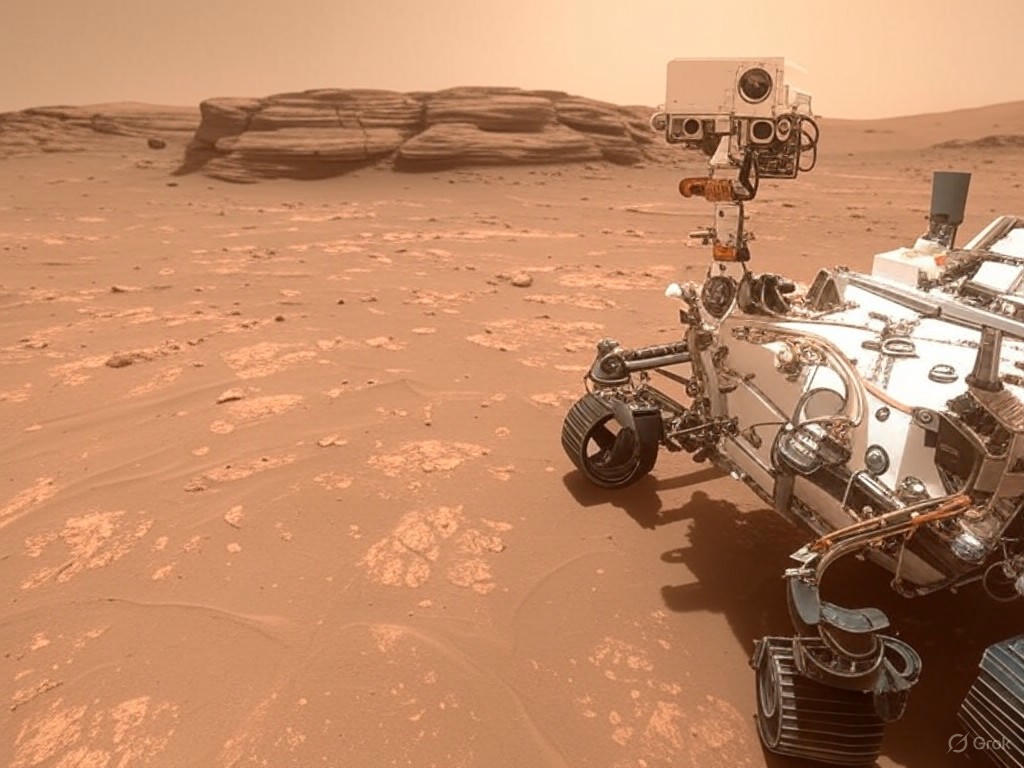NASA’s Perseverance rover, tirelessly exploring the rugged terrain of Mars, has recently fixated on a peculiar formation that scientists are calling a ‘maze.’ This intricate pattern of cracks and ridges, etched into the Martian surface, has captured the attention of researchers and space enthusiasts alike. Located in the Jezero Crater, the site of an ancient lakebed, this maze-like structure isn’t just a visual oddity—it could hold clues to the Red Planet’s enigmatic past. Perseverance, equipped with its advanced SHERLOC instrument (Scanning Habitable Environments with Raman & Luminescence for Organics & Chemicals), is on a mission to decode the secrets hidden within these winding paths.
The fascination with this maze stems from its potential to reveal Mars’ geological history. Scientists speculate that the formation could be the result of ancient water flows, volcanic activity, or even tectonic processes that shaped the planet billions of years ago. Each image snapped by Perseverance provides a piece of the puzzle, offering high-resolution details of the surface texture, mineral composition, and layering of the terrain. SHERLOC’s ability to analyze the chemical makeup of rocks and soil in this area adds another layer of intrigue. Could these patterns indicate past microbial life or simply be a natural quirk of Martian geology? The rover’s relentless photography is a testament to the meticulous nature of scientific discovery, where every angle and shadow might hold a breakthrough.
Beyond the science, there’s a poetic allure to this Martian maze. It symbolizes the broader quest of humanity to navigate the unknown, to solve the riddles of a world so distant yet so tied to our curiosity about life’s origins. Perseverance’s images aren’t just data points; they’re a visual narrative of exploration, a reminder of how much there still is to uncover. As the rover continues its journey, each snapshot of the maze fuels speculation and debate among scientists back on Earth. Is it a fossilized remnant of a river delta, or perhaps evidence of long-gone seismic activity? The answers remain elusive, but the pursuit is relentless.
The work of Perseverance in documenting this feature also underscores the importance of patience in space exploration. Decoding a planet’s history isn’t a sprint; it’s a marathon of data collection, analysis, and interpretation. NASA’s team is hopeful that continued study of this maze will yield insights not just about Mars, but about the conditions that could support life elsewhere in the universe. For now, the rover keeps its lens trained on this cryptic formation, a silent sentinel in the vast Martian desert, capturing images that might one day rewrite our understanding of the cosmos. As we await further findings, the Martian maze stands as a captivating reminder of the mysteries that lie beyond our world, beckoning us to keep looking, keep questioning, and keep exploring.
